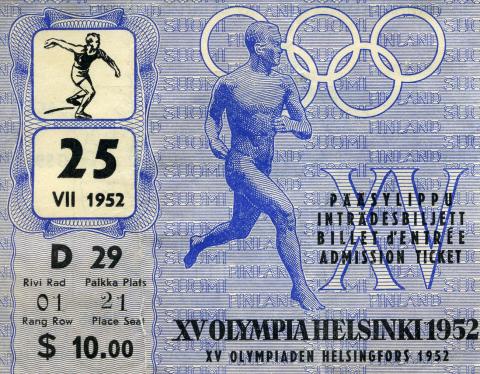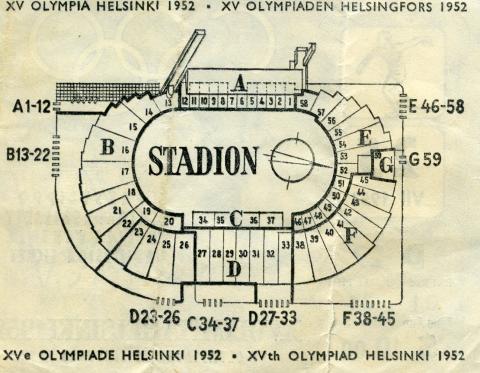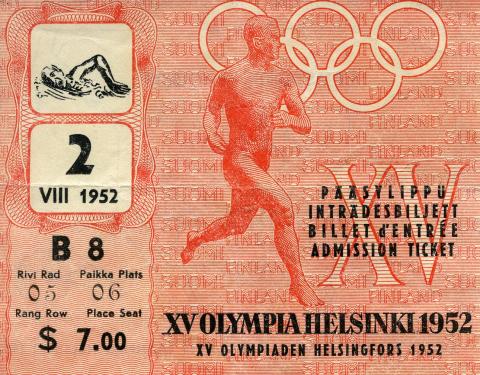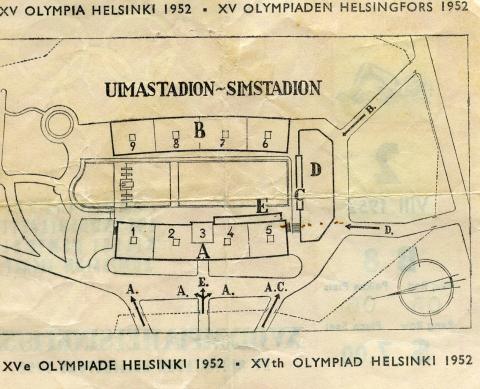Box 1, folder 37 in the J. Raymond Ylitalo Papers in the Booth Family Center for Special Collections in the Georgetown University Library contains several tickets to the 1952 Summer Olympic Games in Helsinki, Finland. J. Raymond Ylitalo (1916-1987) was a career U.S. foreign service official who was the attaché to the American Legation in Helsinki from 1946 to 1950. Owing to his Finnish ancestry, his competence with the Finnish language, and his diplomatic service in that country, Ylitalo presumably attended the Helsinki Olympics with these tickets in 1952.

One of the tickets admitted the guest to a track-and-field event on July 25, 1952. The standard Olympic rings are apparent on the right-hand side of the ticket, along with an image of a runner. On the top left of the ticket is an image of a discus thrower. The ticket cost $10. A map of the stadium hosting the events is provided on the back of the ticket.

Another ticket granted entrance to a swimming event on August 2, 1952. The rings and runner are present on this ticket, too. An image of a swimmer appears in the top-left portion of the ticket.

The ticket cost $7. A map for the event is once again printed on the reverse side of the ticket.

Sports diplomacy was on full display at the 1952 Summer Games. In the years immediately following World War II, the United States and the Soviet Union became engaged in a Cold War. During the Helsinki Olympics, the Soviet Union participated for the first time. Russian athletes had last played in the 1912 event. In addition, Japan and Germany fielded teams for the first time since World War II. The Olympic committee did not allow East German athletes, so Germany was only represented by West Germans. A total of 69 countries competed. The 1952 games proved to be peaceful in the midst of international diplomatic concerns.
After his posting to Finland, Ylitalo served in several diplomatic positions. Specifically, he held posts in Munich, Germany; Manila, Philippines; Washington, D.C.; Tijuana, Mexico; Asuncion, Paraguay; and Toronto, Canada. His highest posting was U.S. Ambassador to Paraguay from 1969 to 1972. After his retirement from the foreign service, Ylitalo published a book titled, Ylitalo: America (Helsinki: Otava, 1982). The book was published only in Finnish.
–Scott S. Taylor,
Manuscripts Archivist
